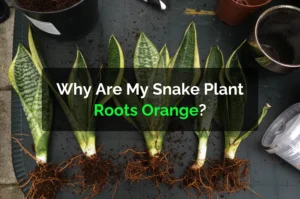Snake plants (Sansevieria trifasciata) are a popular choice for indoor greenery because they are easy to care for and visually striking. However, if you have pets at home, you might ask yourself: Are snake plants harmful to animals? In this article, we’ll explore everything you need to know to keep your furry friends safe while enjoying your plants.
Are Snake Plants Harmful to Pets?
Yes, snake plants are considered toxic to pets such as dogs, cats, and even small animals like rabbits. They contain a natural chemical called saponins, which helps protect the plant from pests but can cause unpleasant reactions if ingested by animals.
What Happens If an Animal Eats a Snake Plant?
When a pet chews on or swallows parts of a snake plant, they may experience symptoms including:
- Vomiting
- Diarrhea
- Drooling
- Mouth or tongue irritation
- Reduced appetite
- Tiredness or sluggishness
Most cases are mild, but if a lot is consumed or if the pet is very young, elderly, or unwell, symptoms could become more serious.
How Dangerous Is the Snake Plant?
Snake plants are regarded as mildly to moderately toxic. This means that while they usually cause discomfort rather than life-threatening problems, it’s important to act quickly if your pet has eaten any part of the plant. Immediate attention from a veterinarian can help prevent complications.
Which Animals Are Most at Risk?
Let’s take a closer look at how different pets are affected:
Cats
Cats are natural explorers and often nibble on houseplants. If a cat ingests a snake plant, it might start vomiting, drooling excessively, or show signs of stomach upset.
Dogs
Dogs, especially puppies, are curious chewers. After eating a snake plant, a dog might have diarrhea, vomiting, or noticeable swelling around the mouth.
Small Animals
Small pets like rabbits, hamsters, and guinea pigs are especially sensitive. Even a small bite could lead to serious discomfort because of their smaller body sizes.
Why Do Pets Bite Houseplants Like Snake Plants?
Pets may chew on plants for a variety of reasons:
- Curiosity
- Boredom
- Nutritional cravings (like fiber)
- Anxiety or stress
Recognizing why your pet is attracted to houseplants can help you create better strategies to keep them safe.
How to Keep Pets Safe from Snake Plants
Here are some practical tips to protect your pets without giving up your favorite greenery:
1. Keep Plants Out of Reach
Place your snake plants on high shelves, use tall plant stands, or hang them from the ceiling. Make sure cats cannot easily climb to reach them.
2. Set Up a No-Pet Plant Zone
Create a room or area where you can safely display plants and restrict your pets from entering.
3. Use Safe Deterrents
Pet-safe bitter sprays can be applied lightly to the plant’s leaves to discourage nibbling.
4. Offer Pet-Safe Plants
Provide your pets with plants they are allowed to chew, like cat grass, to satisfy their natural urge without risking their health.
Pet-Friendly Alternatives to Snake Plants
If you prefer a worry-free home for your pets and plants, consider these non-toxic options:
- Spider Plant
- Areca Palm
- Bamboo Palm
- Peperomia
- Boston Fern
These plants are beautiful and safe for your furry companions.
Frequently Asked Questions (FAQ)
How Quickly Do Symptoms Show Up After Eating Snake Plant?
Pets often show symptoms like vomiting or drooling within a few hours of ingestion.
Can I Own a Snake Plant if I Have Pets?
Yes, you can! Just take precautions by keeping the plant well out of your pets’ reach and offering them safer plants to chew on.
Conclusion
Snake plants are a stunning addition to any indoor space, but they do come with risks for pets. Understanding the mild toxicity of snake plants and taking steps to prevent exposure can help ensure your animals stay healthy and happy.
By carefully placing your plants and offering pet-friendly alternatives, you can enjoy a green and pet-safe home. A little planning will let you enjoy the beauty of snake plants without putting your beloved pets at risk.






